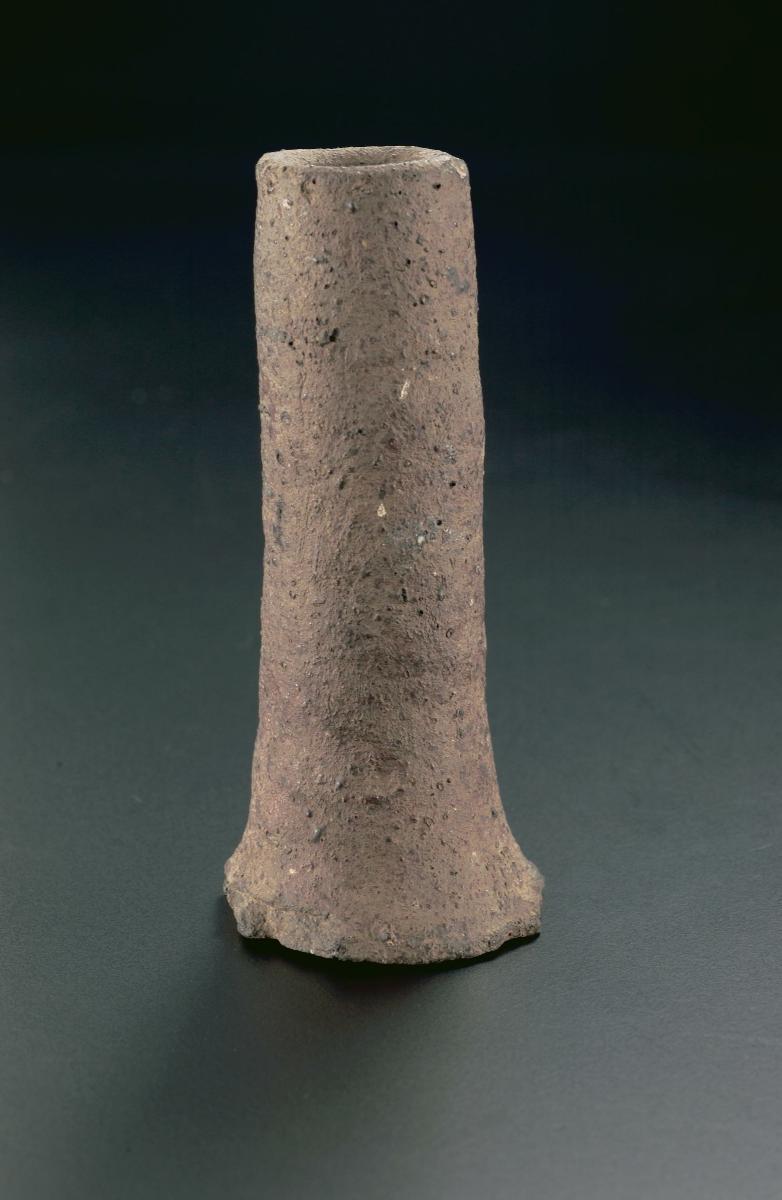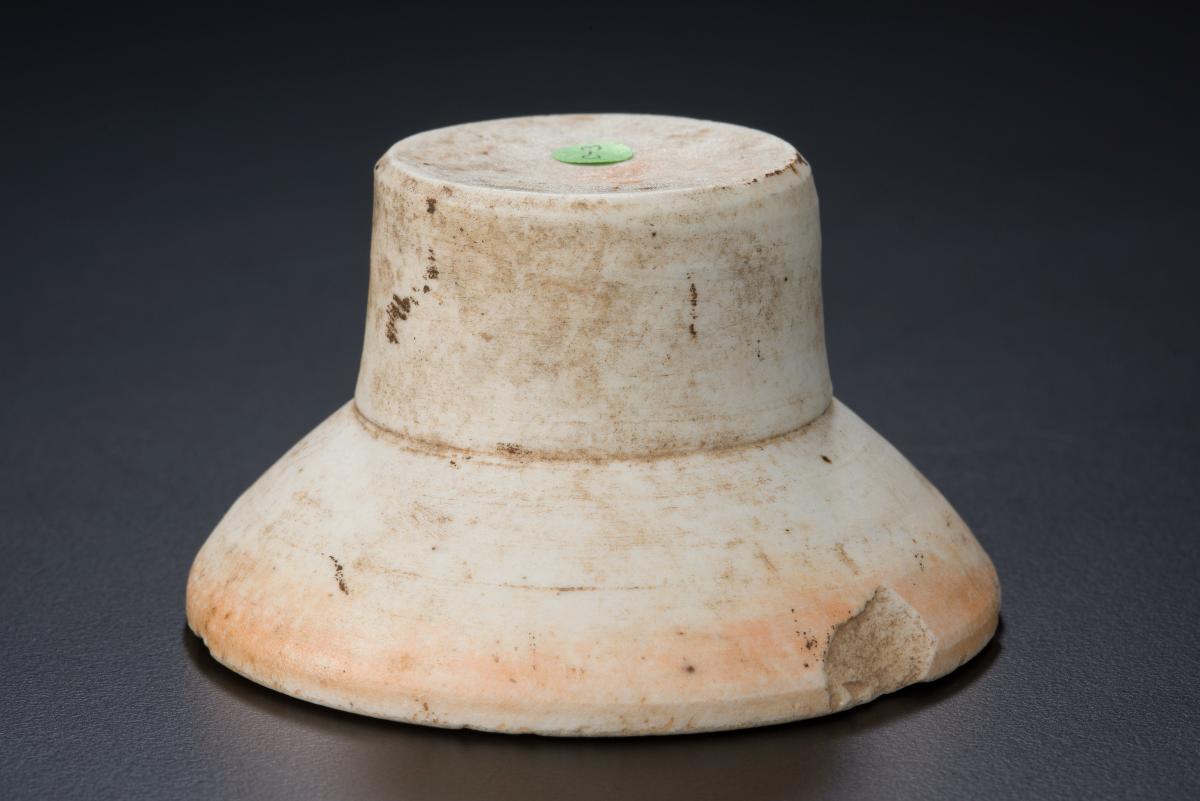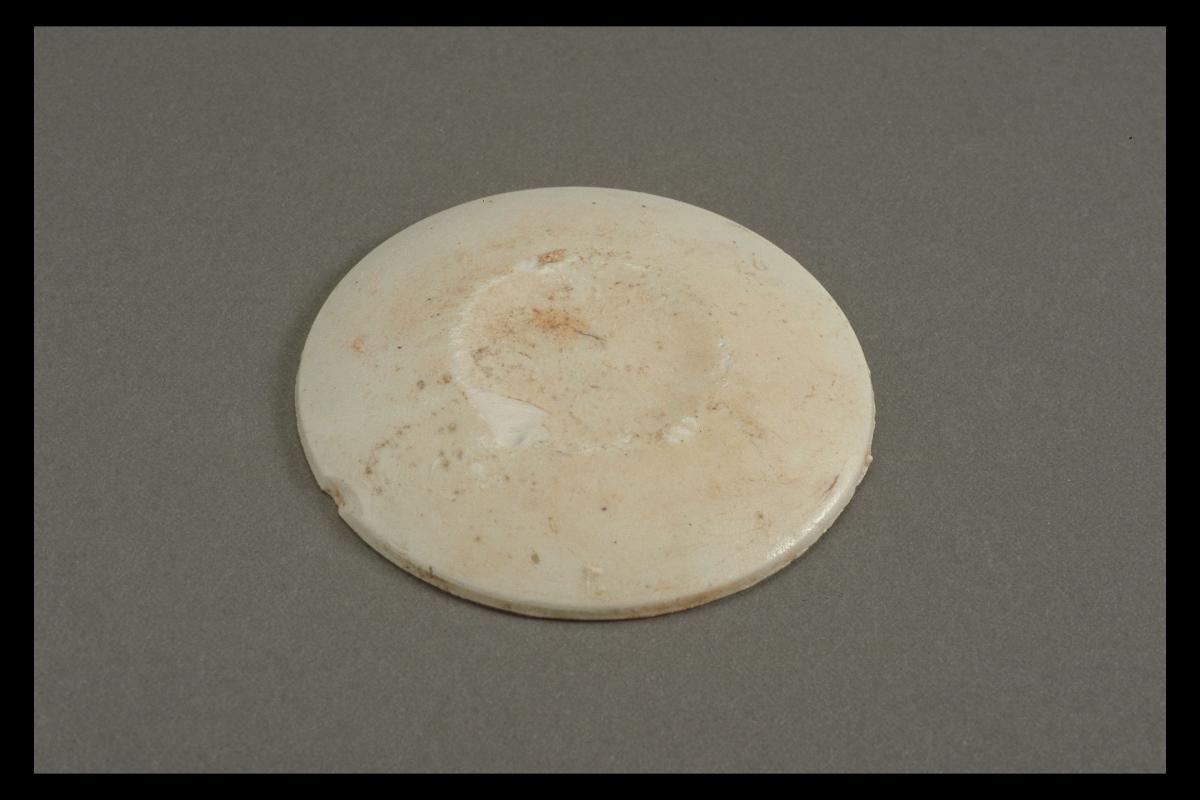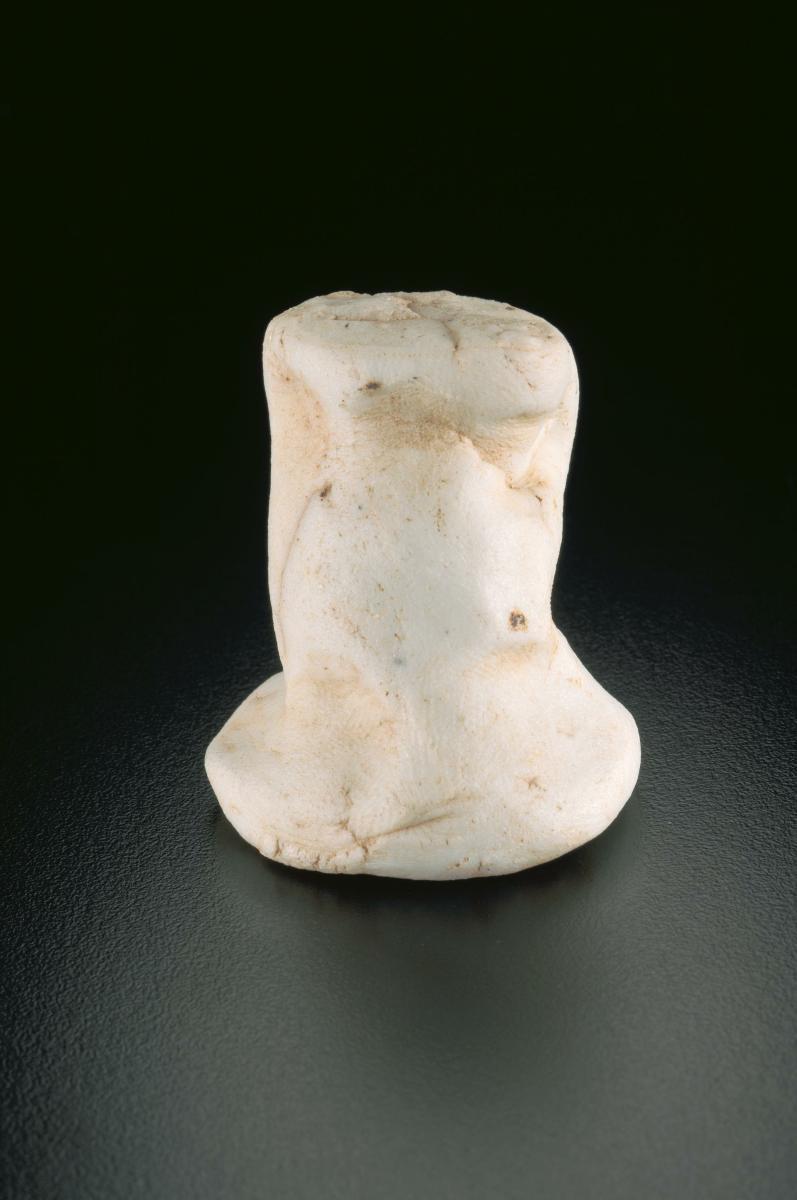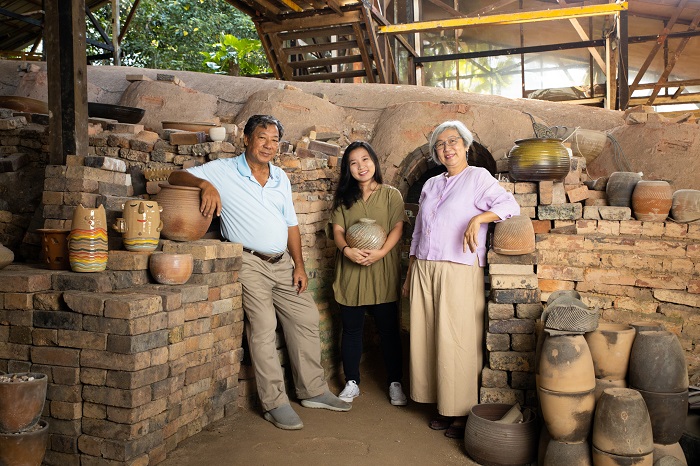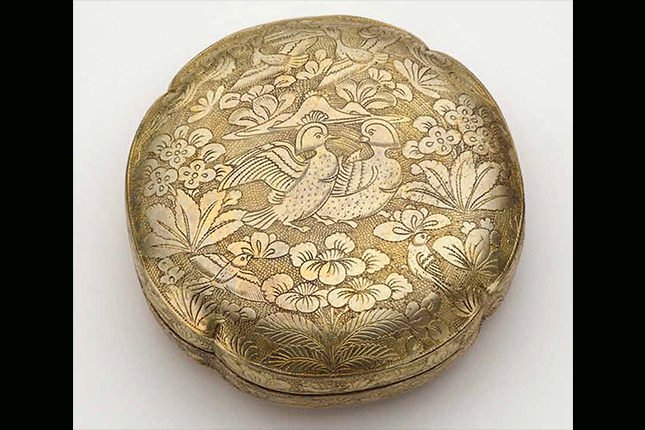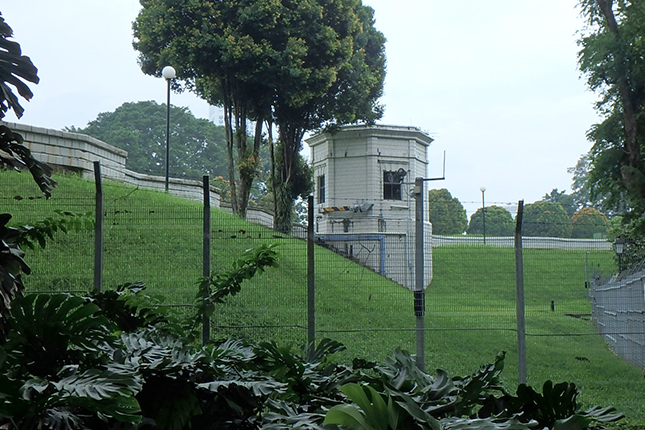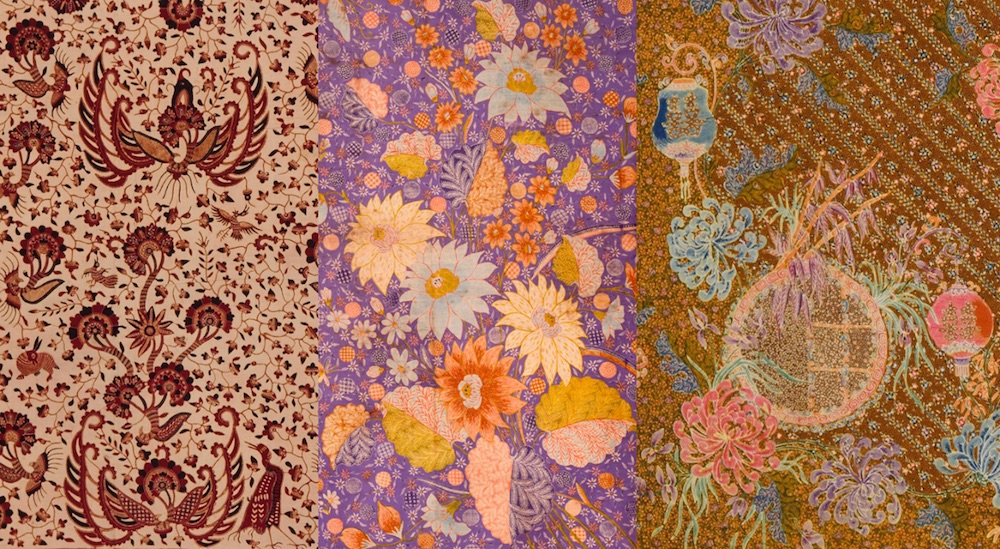This tubular support was part of the kiln furniture that potters at Si Satchanalai and Sukhothai began to use during the 14th century. This type of support enabled wares of different sizes to be fired more safely, compared to earlier stacking techniques which only allowed for vessels of the same size to be stacked ontop of each other, which often resulted in the fusing of pieces. Many bowls and dishes bear a circular mark on the base, where the tubular support would have been placed. Large quantities of these wares were made for export by kilns at the twin cities of Si Satchanalai and Sukhothai, which together were one of the largest ceramic-producers in Southeast Asia, during the 12th to 14th centuries.




